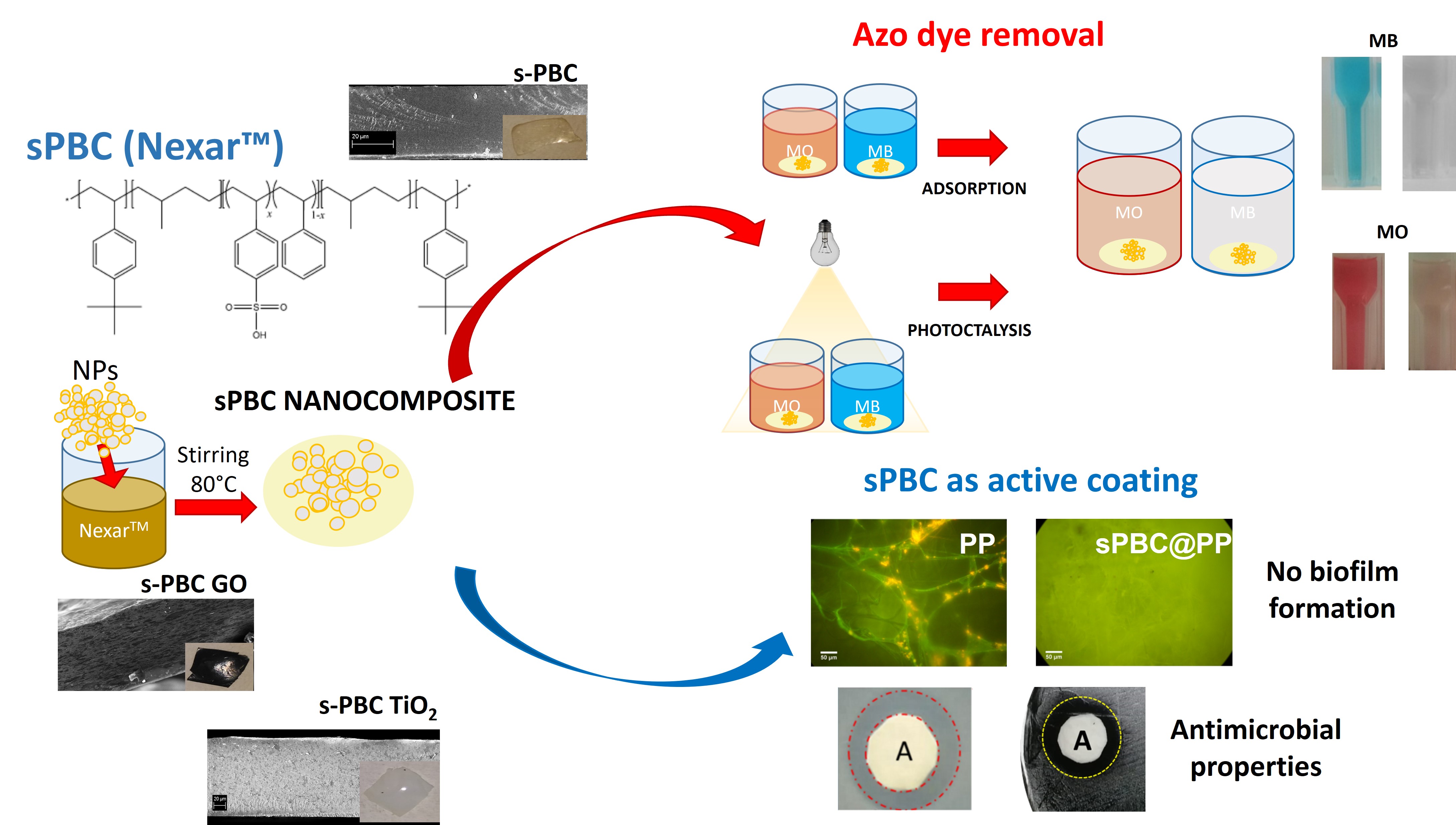
Recently scientific community and governments pointed out the urgent need of new materials and technologies for water purification. This is underlined by the fact that under the first Horizon calls for projects, approximately €165 million are provided to water-related projects and this topic remains a key objective under the new EU research and innovation funding program, Horizon 2020. The increase of global population within global warming seriously affects water quality and availability. Only 0.75% of natural water is available for the survival of all living creatures outside of the sea. 1.2 billion people lack access to safe drinking water, 2.6 billion have little or no sanitation, millions of people die annually from diseases transmitted through unsafe water and around $7.3million is spent on healthcare for waterborne diseases alone. Water also strongly affects energy and food production, industrial development, and the environment quality, affecting the economies, health of population and social development of both developing and industrialized nations. Nanocomposite membranes are new effective and low cost materials for water purification, combining the advantages of membrane technology, nanoparticles, photocatalysis within the advantage of reducing power disposal and having reusable materials.
NexarTM, as commercially known, is a symmetric pentablock copolymer comprised of poly[t-butyl styrene-b-hydrogenated isoprene-b-sulfonated styrene-b-hydrogenated isoprene-b-t-butyl styrene] (tBS-HI-SS-HI-tBS). Its block architecture within the presence of sulfonilic groups make this polymer a good candidate for water purification application within a good trade-off between hydrophilicity and mechanical stability.
NexarTM is able to efficiently remove positive charged water contaminants (i.e. Methylene Blue and heavy metals such as cobalt, nickel, chromium and lead) mainly through adsorption due to electrostatic attraction [1,2]. Negative charged contaminants such as Methyl Orange are not absorbed unless the pH is shifted to acid values since the dye assumed a positive charge [1]. The dispersion of Graphene Oxide inside this polymeric matrix increases its adsorption abilities, while the dispersion of inorganic semiconductors such as Titanium Dioxide and Bismuth Oxide confer to the polymer a photodegradation ability either under UV and Visible light irradiation [1-3].
NexarTM can be used as active coating for fouling minimization of commercial filters such as polypropylene (PP) filters. Indeed, unlike PP filters, NexarTM covered PP filters show no attachment of bacteria on their surface avoiding biofilm formation and this is related to NexarTM high hydrophilicity, higher smoothness and sulfonilic functionalization. Moreover, the presence of acid sulfonilic groups is responsible of selective dyes adsorption and antimicrobial activity against Legionella and Pseudomonas [4,5].
These results should be considered as a first step in developing efficient membranes and innovative filters with photocatalytic activity and removal ability towards various organic pollutants and ions from water. Besides the water purification applications, these membranes, due to high proton conductivity, find application as polymeric electrolyte in fuel cells, photoelectrochemical solar cells or water electrolyser for hydrogen production, as suggested by a recent work [6].
- S. Filice, D. D’Angelo, A. Scarangella, D. Iannazzo, G. Compagnini and S. Scalese, Highly effective and reusable sulfonated pentablock copolymer nanocomposites for water purification applications. RSC Advances, (2017), 7(72):45521-45534.
- S Filice, M Mazurkiewicz-Pawlicka, A Malolepszy, L Stobinski, R Kwiatkowski, A Boczkowska, L Gradon, S Scalese Sulfonated pentablock copolymer membranes and graphene oxide addition for efficient removal of metal ions from water. Nanomaterials, (2020), 10 (6), 1157.
- D. D’Angelo, S. Filice*, A. Scarangella, D. Iannazzo, G. Compagnini, S. Scalese, Bi2O3 / Nexar® polymer nanocomposite membranes for visible photocatalytic applications. Catalysis Today, (2019), 321–322, 158–163.
- E L Sciuto, S Filice, M A Coniglio, G Faro, L Gradon, C Galati, N Spinella, S Libertino, S Scalese Antimicrobial s-PBC Coatings for Innovative Multifunctional Water Filters. Molecules, (2020), 25 (21), 5196.
- E.L. Sciuto, P. Laganà, S. Filice, S. Scalese, S. Libertino, D. Corso, G. Faro, M.A. Coniglio Environmental Management of Legionella in Domestic Water Systems: Consolidated and Innovative Approaches for Disinfection Methods and Risk Assessment. Microorganisms, (2021), 9, 577.
- S Filice, G Urzì, RG Milazzo, SMS Privitera, SA Lombardo, G Compagnini, S Scalese, Applicability of a New Sulfonated Pentablock Copolymer Membrane and Modified Gas Diffusion Layers for Low-Cost Water Splitting Processes. Energies, (2019), 12, 2064.

